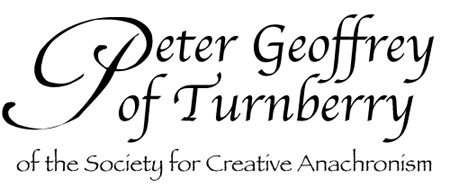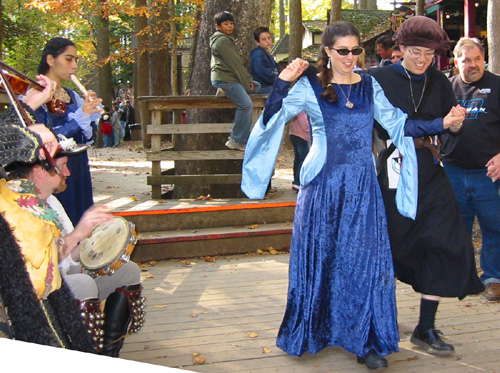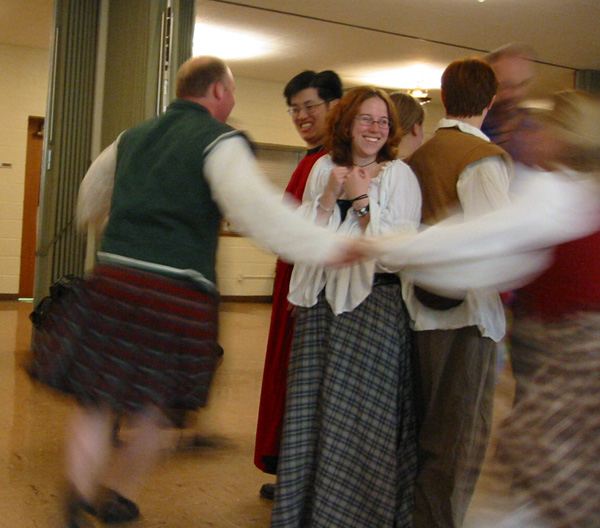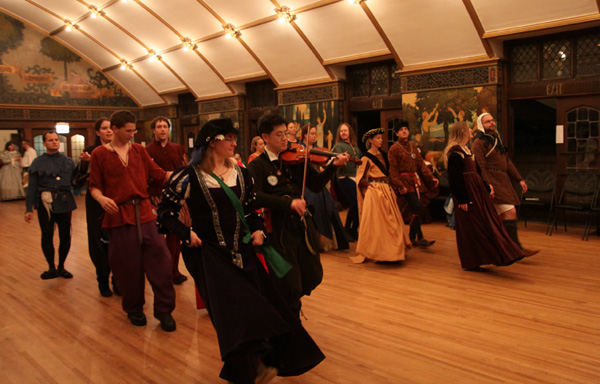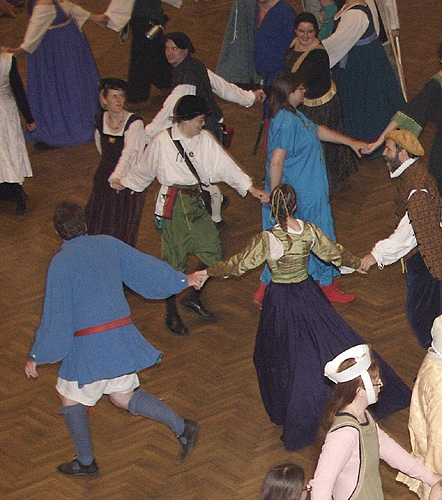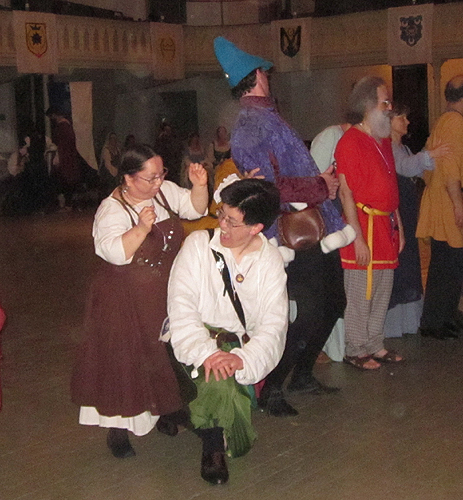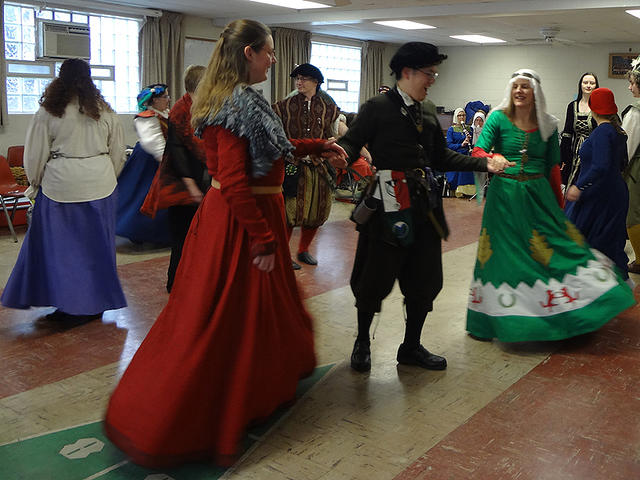the periphery

home 
|
On Dancing in the SCA
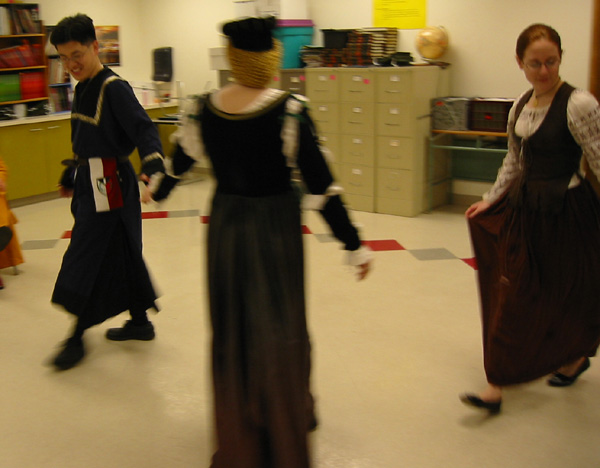 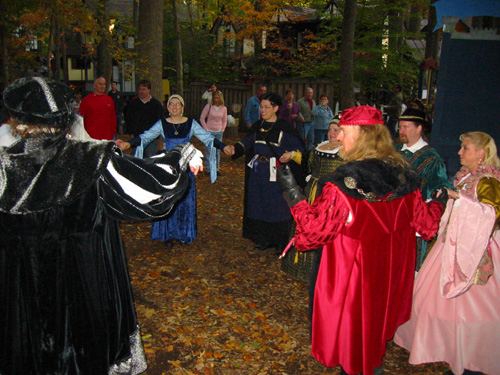
What is medieval dancing? If you've seen the movie Braveheart and remember the dancing at the wedding early in the movie; or if you've watched Shakespeare in Love and seen the dance at the deLesseps in which Will Shakespare first meets Viola; then you've seen medieval dancing. What we do are the dances done by people of the middle ages, by commoners or nobles; by Italians, French, English, and many other place besides; the dances recorded in or reconstructed from manuscripts and collections. This page has a substantial compilation of information on the net about medieval dance; this page instead focuses on a less academic and more personal perspective on medieval dancing.
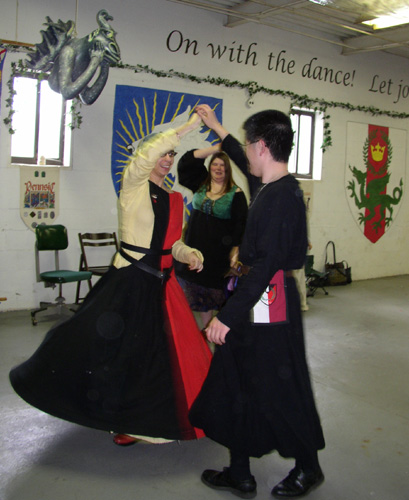
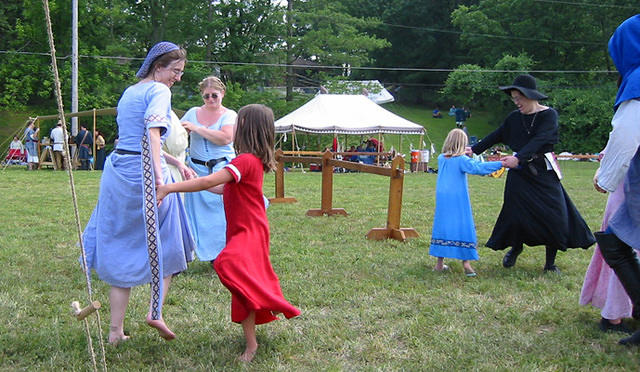
Cynnabar's Terpsichore is an all-day dance event which brings in dancers from across the Knowne World, and for which over the years the dancer of Cynnabar have compiled one of the more comprehensive available references to medieval dances (downlaadable here). We dance at demonstrations for elementary school kids at libraries, at great events of the Kingdom, at balls and revels and dance the night away at the great tournaments. But more importantly, it is the welcoming, friendly, beginners-always-welcome dancers of Cynnabar -- some of whom have been pursuing the art for more than a decade -- that makes it such an easy thing to pick up -- and enjoy.
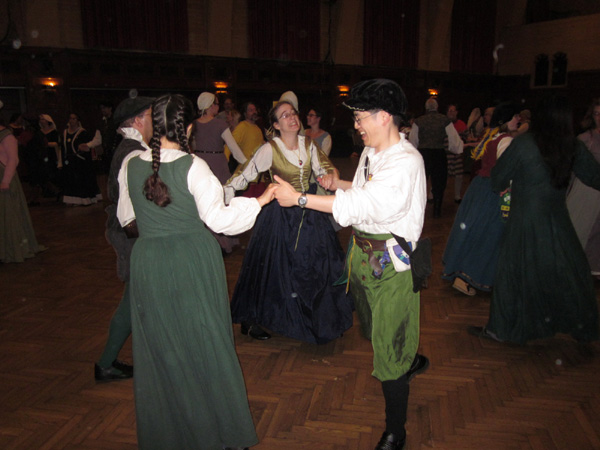
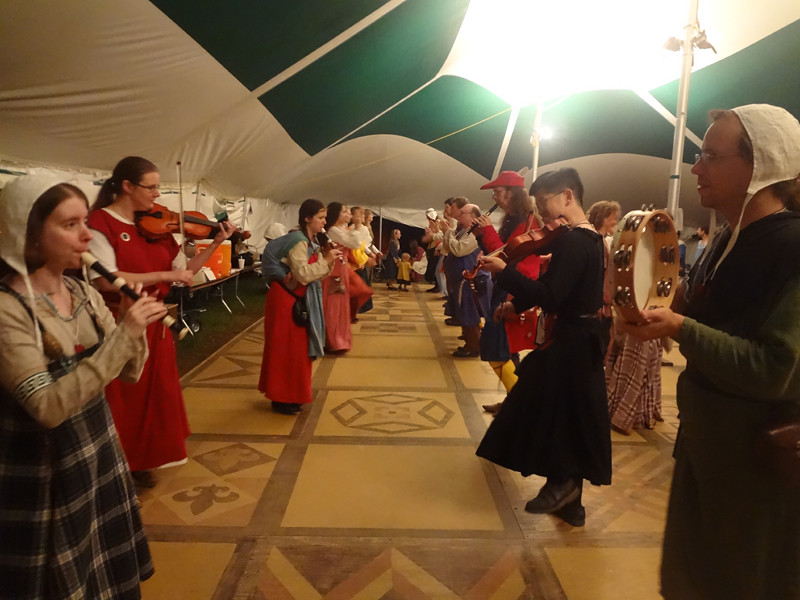
| |
|
All materials copyright Jeffrey Huo, 2005 jeffshuo@alumni.northwestern.edu |
